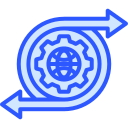
Educational Platforms and Their Role in Bridging Global Learning Gaps
Chosen theme: Educational Platforms and Their Role in Bridging Global Learning Gaps. From remote villages to crowded cities, digital platforms are rewriting who gets to learn, when, and how. Here, we share hopeful stories, practical insights, and bold ideas that turn connectivity into opportunity. Subscribe to follow this journey and add your voice to a global classroom without walls.


Understanding the Global Learning Gap
Learning gaps are fueled by uneven connectivity, limited devices, language mismatches, and the cost of quality materials. Even motivated learners hit gatekeeping walls like accreditation and time constraints. Naming these barriers is the first step to dismantling them together.
Understanding the Global Learning Gap
Educational platforms scale mentorship, content, and assessment across borders, turning scarcity into shared abundance. With asynchronous delivery and adaptive pathways, they meet learners where they are, not where the system expects them to be. Your feedback helps shape better pathways.
Access and Connectivity Innovations

Downloadable modules, lightweight formats, and local caching keep learning alive when the signal drops. Community hubs can sync content overnight and distribute it in the morning. This design principle respects limited infrastructure and honors the dignity of learners facing intermittent access.



Inclusion and Accessibility by Design
Universal Design for Learning Principles
Multiple means of engagement, representation, and expression turn one-size-fits-all into fit-for-you. Offer text, audio, and visuals; accept projects, reflections, and recorded explanations. When design centers flexibility, differences become assets rather than obstacles.
Assistive Technologies and Friendly Interfaces
Screen reader compatibility, keyboard navigation, high-contrast modes, captions, and semantic headings are not extras; they are essential. Platforms that test with real users, publish accessibility statements, and fix issues quickly demonstrate respect, not just compliance.
Flexible Timing for Real Lives
Asynchronous modules, generous deadlines, and progress-saving features recognize that learners juggle work, caregiving, and unpredictable connectivity. A nurse in night shifts completed modules during quiet hours, then joined weekend discussions. Flexibility kept ambition from colliding with reality.
Quality, Assessment, and Recognized Credentials
01
Stackable certificates aligned to clear skill frameworks help learners build visible progress. When platforms map competencies to industry standards and share evidence like portfolios, badges become bridges to employment rather than digital stickers without weight.
02
Project-based tasks, oral reflections, and community problem solving can be more equitable than high-stakes timed exams. Rubrics, peer review, and transparent criteria support fairness. These approaches reduce proctoring burdens while highlighting real-world application and creativity.
03
When universities, training bodies, and employers co-design curricula, credentials gain credibility. A regional firm once fast-tracked interviews for candidates who completed a platform’s verified track. Collaboration converts online effort into offline opportunity with measurable impact.
Open Educational Resources and Shared Value
Open licensing lowers costs and invites adaptation. Schools can remix materials to local needs without reinventing the wheel. Platforms that support open ecosystems amplify community creativity and keep education a common good rather than a closed gate.
Data Minimization and Learner Safety
Collect only what is necessary, explain why, and protect it rigorously. Clear dashboards should let learners control profiles, exports, and deletions. Ethical analytics focus on support, not surveillance, turning data into a scaffold rather than a shadow.
Local Capacity and Long-Term Ownership
Training local educators, building admin skills, and publishing handbooks reduce dependency on distant teams. When communities can maintain courses and hubs themselves, platforms become infrastructure rather than a temporary project. Durable bridges need local caretakers.
What Comes Next: AI, Community, and the Human Thread
AI as a Bridge, Not a Gatekeeper
Adaptive feedback, translation, and summarization can help learners move faster and with confidence. Transparent models, clear authorship, and bias checks keep trust intact. AI should widen access to tutors and explanations, never replace human judgment or community wisdom.
Mentorship at Scale
Structured peer groups, volunteer coaches, and alumni circles bring warmth to digital spaces. A weekly check-in message can rekindle momentum after setbacks. Platforms that normalize asking for help transform isolation into belonging, sustaining learners through inevitable challenges.
Your Role in Shaping the Platform Future
Every comment, survey response, and shared story helps refine features, policies, and practices. Subscribe, invite a friend, and tell us what would make learning in your context more possible. Together, we can keep widening the bridge until no one is left behind.
